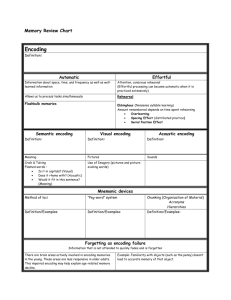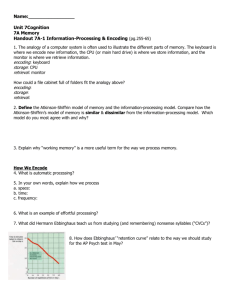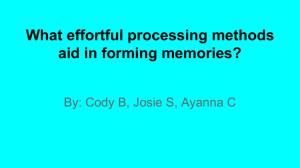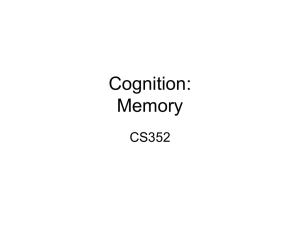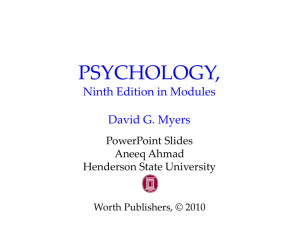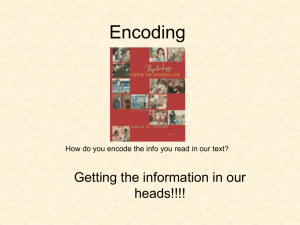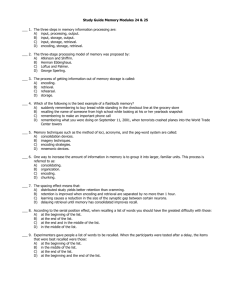Encoding: Getting Information In
advertisement
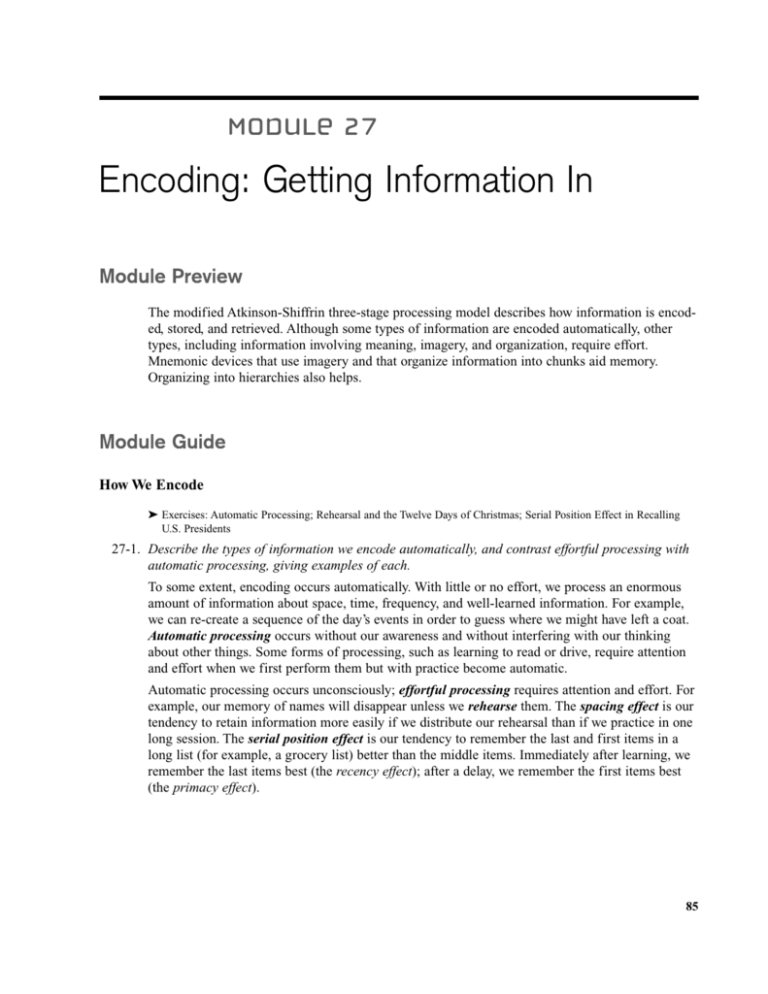
Encoding: Getting Information In The modified Atkinson-Shiffrin three-stage processing model describes how information is encoded, stored, and retrieved. Although some types of information are encoded automatically, other types, including information involving meaning, imagery, and organization, require effort. Mnemonic devices that use imagery and that organize information into chunks aid memory. Organizing into hierarchies also helps. How We Encode ➤ Exercises: Automatic Processing; Rehearsal and the Twelve Days of Christmas; Serial Position Effect in Recalling U.S. Presidents 27-1. Describe the types of information we encode automatically, and contrast effortful processing with automatic processing, giving examples of each. To some extent, encoding occurs automatically. With little or no effort, we process an enormous amount of information about space, time, frequency, and well-learned information. For example, we can re-create a sequence of the day’s events in order to guess where we might have left a coat. Automatic processing occurs without our awareness and without interfering with our thinking about other things. Some forms of processing, such as learning to read or drive, require attention and effort when we first perform them but with practice become automatic. Automatic processing occurs unconsciously; effortful processing requires attention and effort. For example, our memory of names will disappear unless we rehearse them. The spacing effect is our tendency to retain information more easily if we distribute our rehearsal than if we practice in one long session. The serial position effect is our tendency to remember the last and first items in a long list (for example, a grocery list) better than the middle items. Immediately after learning, we remember the last items best (the recency effect); after a delay, we remember the first items best (the primacy effect). 85 86 Module 27 Encoding: Getting Information In What We Encode ➤ Exercises: Meaning and Memory; Visually Versus Auditorily Encoded Information; Semantic Encoding of Pictures; Chunking ➤ Lectures: Mnemonic Devices; The Keyword Method 27-2. Compare the benefits of visual, acoustic, and semantic encoding in remembering verbal information. When processing verbal information for storage, we usually encode its meaning. For example, we associate it with what we already know or imagine. Research indicates that semantic encoding (of meaning) yields better memory of verbal information than acoustic encoding (of sound) or visual encoding (of an image). This research also highlights the futility of trying to remember words we do not understand and the benefits of rephrasing what we read and hear into meaningful terms. 27-3. Describe some memory-enhancing encoding strategies. In a variety of experiments, researchers have documented the benefits of mental imagery. For example, we remember concrete words that lend themselves to picture images better than we remember abstract, low-imagery words. We remember concrete nouns better than abstract nouns because, for example, we can associate both an image and a meaning with fire but only a meaning with process. Imagery is at the heart of many memory aids, or mnemonics. For example, in the peg-word system, people remember new items by using a visual as well as an acoustic code. When we organize information into meaningful units, we recall it more easily. In chunking, we cluster information into familiar, manageable units, such as words into sentences. Chunking occurs so naturally that we often take it for granted. When people develop expertise in an area, they often process information in hierarchies composed of a few broad concepts divided and subdivided into lesser concepts and facts. In this way, experts can retrieve information efficiently.


